
The Venomous Snakes Of Utah
Utah’s dry, desert climate is the perfect habitat for the 31 species and subspecies of snakes that call the state home. While most are harmless, and the majority of encounters with them pass without incident, there are a few venomous species to watch out for. Learning how to identify these reptiles, where they’re found, and what to do if you see one can help protect you from getting a nasty bite.
As a general rule, Utah’s venomous snakes have broad, triangular-shaped heads and slitted eyes compared to the longer snouts and round pupils of non-venomous species. If in doubt, act as if the snake is venomous and keep your distance. Below is a list of Utah’s venomous snake species so you can learn their markings, habitats, and behaviors. Note, also, that these species are most active at dawn and dusk in the late spring and early summer.
Great Basin Rattlesnake
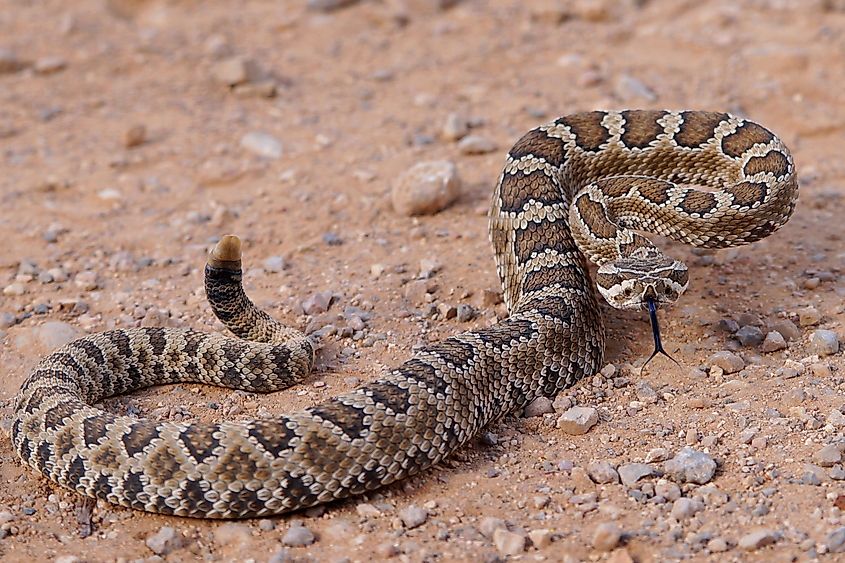
Also known as Crotalus oreganus lutosus, the Great Basin Rattlesnake is found throughout the western United States in Arizona, California, Idaho, Nevada, Oregon, and Utah. This species is the most common rattlesnake in the state and is mostly found in rocky areas at high elevations, but it can also hang out in flats, amid grassland, and thickets. The Great Basin Rattlesnake can reach up to 48 inches long, with males having larger heads than females. It can be tough to identify the Great Basin Rattlesnake as its markings and wide blotches running along its body come in a variety of colors from dark brown to silver. Look for the signature rattle, a wide head, and slitted eyes.
Rattlesnakes hibernate during the cold winter months and emerge in spring when they are very active, looking for water and prey. They eat lizards, rodents, and occasionally birds. Their coloration helps them blend into their environment, so it’s important to stay sharp-eyed on the trails. Rattlesnakes like to hang out on warm rocks, ledges, or logs to soak up the sun, so pay particular attention to these areas. If you do hear a rattle, stay calm, try to locate the snake, and slowly back away. Bear in mind that it’s illegal to harass or kill a rattlesnake in Utah unless you are directly endangered by it.
Midget Faded Rattlesnake
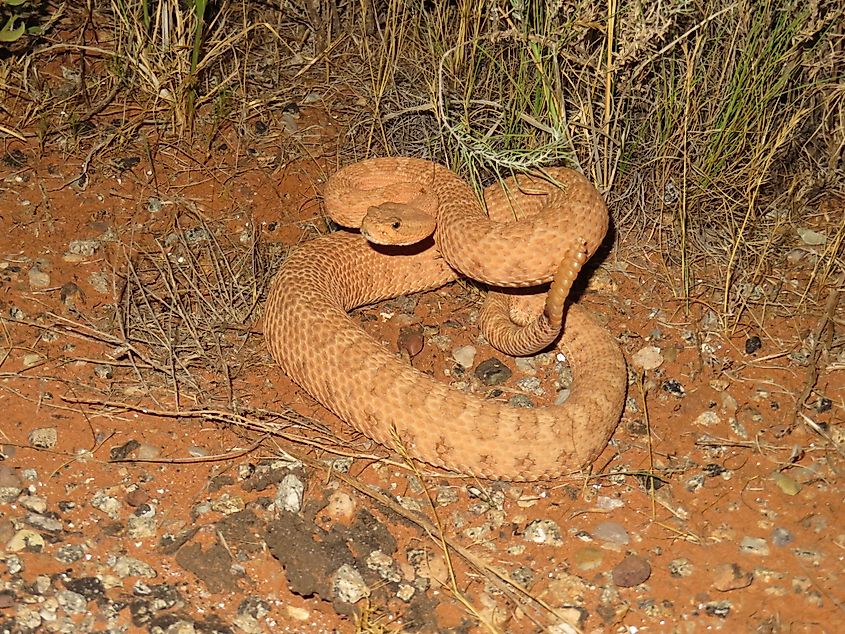
As you’d expect from its name, the Midget Faded Rattlesnake, or Crotalus oreganus concolor, is one of the smaller rattlesnake species at under 24 inches long. It’s found in the Green River Basin area of eastern Utah and prefers rocky hillsides with lots of cover in the form of thickets, crevices, and overhangs. While these snakes are generally found on the ground, they have been known to hide out in trees and shrubs; they will also crawl into burrows or caves during cold weather when they’re inactive.
On the rare chance you see a group of Midget Faded Rattlesnakes they are probably pregnant females — expectant snakes like to gather together on the same warm surface to bask in the sun and wait to give birth in late summer and fall.
The Midget Faded Rattlesnake is generally tan, cream, or yellowish with faint, oval markings on their back. Dark when they’re young, these blotches fade to silver or grey as the snake ages. Their venom is more toxic than most rattlesnakes as it contains a potent neurotoxin and myotoxin, which causes paralysis. They eat small mammals, birds, lizards, and amphibians.
Mojave Desert Sidewinder
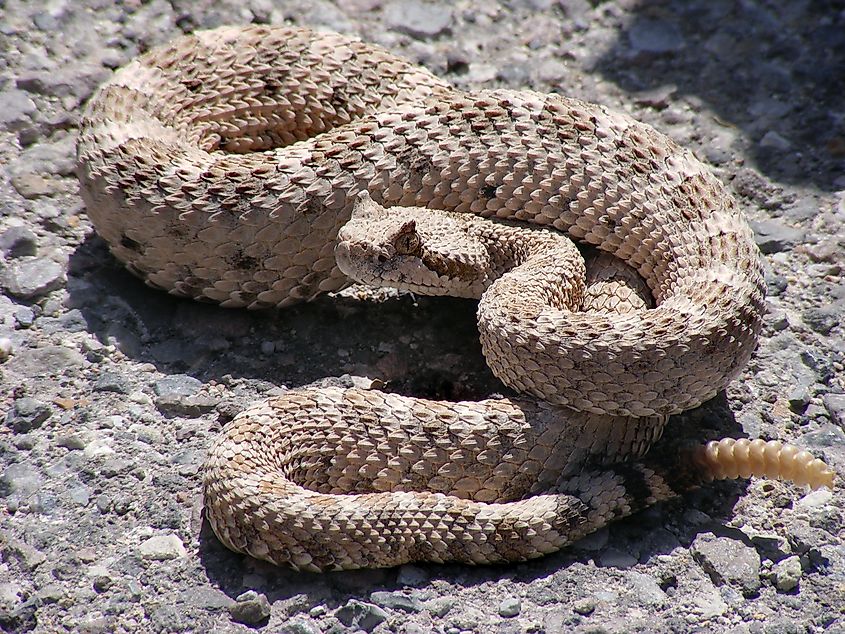
Crotalus cerastes cerastes, better known as the Mojave Desert Sidewinder, is from the viper family. It’s found in southwestern Utah with all known sightings occurring in southwestern Washington County. As the name suggests, sidewinders are known for their distinctive movement — traveling sideways in an s-shaped movement across the sandy terrain they inhabit. This species is typically nocturnal and will spend cool days and nights tucked away in burrows.
The Mojave Desert Sidewinder is relatively small, reaching 24.2 inches in length. The pale snake’s dusky coloring gives it the perfect camouflage for blending into the sand. They do, however, have dark spots that can be tan, gray, or yellow. This species eats small mammals, lizards, birds, and sometimes other snakes. It’s generally not a big risk to humans as it only injects a small amount of venom when biting.
Mojave Rattlesnake
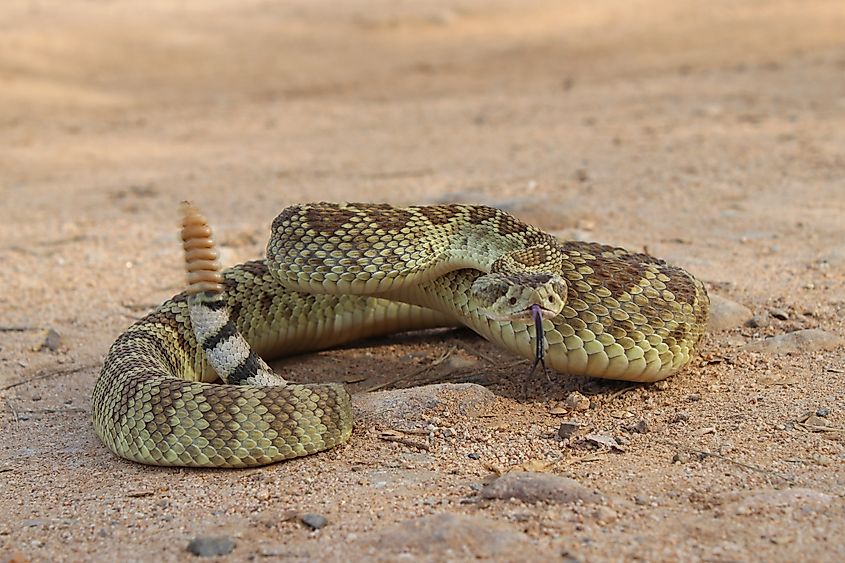
Much like the Mojave Desert Sidewinder, the Mojave Rattlesnake (Crotalus scutulatus) is only found in the southwestern corner of Utah in barren, desert environments. It’s also mostly nocturnal, getting out of the intense heat to shelter in dark, cool, burrows. It’s relatively easy to identify the Mojave Rattlesnake thanks to their unique markings and the large scales on top of their head between their eyes. The snakes, which can grow up to 54 inches, are green, brown, or yellow and carry dark patches along their back shaped like diamonds, ovals, or hexagons.
Their venom is very powerful compared to other rattlesnake species — it even has its own name, Mojave Toxin. The Mojave Rattlesnake has a reputation for being aggressive but, like most snakes, striking is a last resort. When it feels threatened, the rattlesnake will lift its head, winding it in an s-shape, and rattle loudly.
Prairie Rattlesnake
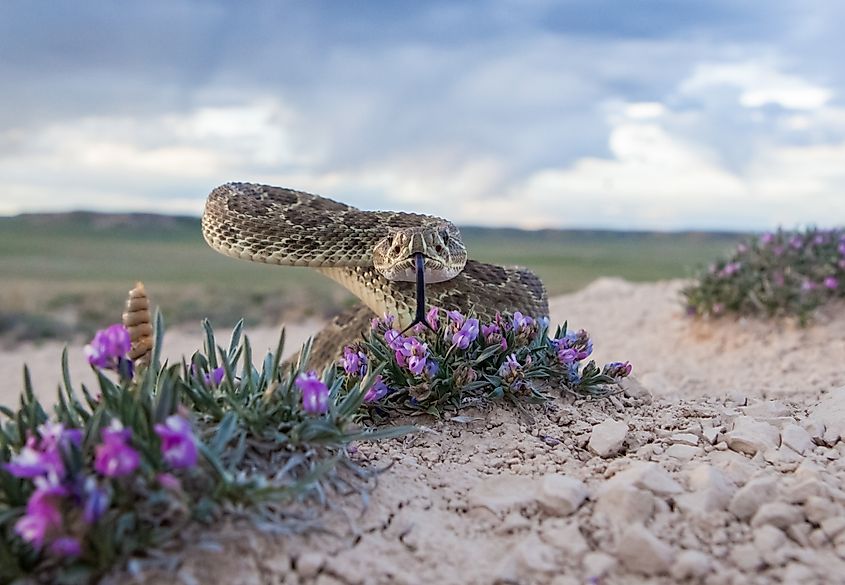
Crotalus viridis viridis, or the Prairie Rattlesnake, has the largest range of any rattlesnake species, meaning they’re found throughout the United States. In Utah, you’re most likely to find them in open grasslands and prairies in the southeastern part of the state.
Prairie Rattlesnakes have a wide, triangular head and blunt nose. They can reach up to 60 inches long and are green or brown with brown or black spots ringed with dark and light lines. While they prefer open grass, this species can also be found in woods, brush, caves, rocks, and even alongside streams. They have a powerful bite, releasing 20-55% of their venom in a single strike. Their venom is a hemotoxin, meaning it destroys blood cells, affecting circulation and muscle tissues.
Southwestern Speckled Rattlesnake
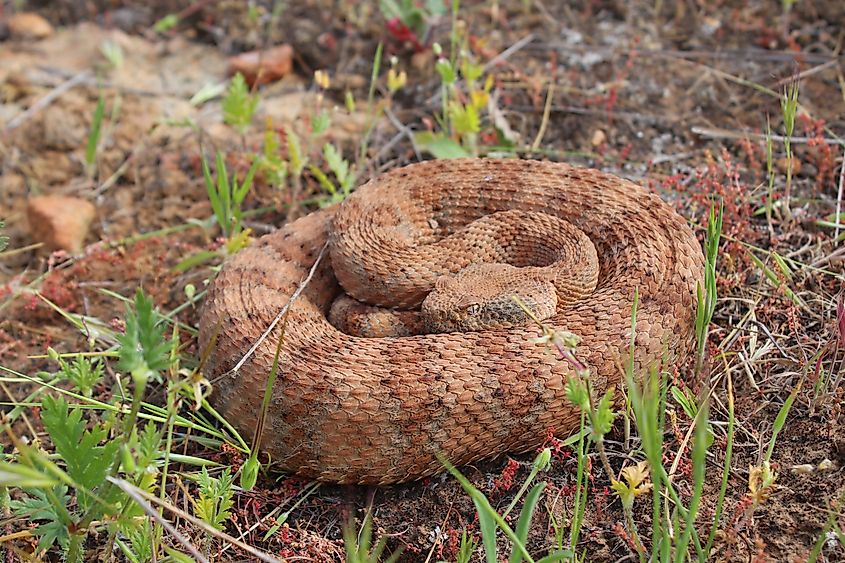
Native to hot, dry climates, the Southwestern Speckled Rattlesnake (Crotalus mitchellii pyrrhus) is found in the desert region of southeastern Utah but its population in the state is very small. If properly treated, their venom is rarely lethal to humans.
Active from April to October, the snake prefers rocky areas and desert scrub, and hibernates in dens through the colder months. Growing up to 43.7 inches long, the Southwestern Speckled Rattlesnake varies in color. They can be pinkish, blue, black, white, or grey. The snake is a wide range of hues, enabling it to blend into its environment, whether that’s red rocks, white stone, or brown sand. This resilient rattlesnake has an unusual habit known as ‘rain harvesting’ — in dry periods, it uses its body to collect and store rainwater so it can survive through drought-like conditions.
Snakes perform a key role in Utah’s ecosystem, keeping down insect and rodent populations. By knowing your species and staying aware of your surroundings, it’s very possible to peacefully co-exist with these fascinating and misunderstood creatures. Follow some best practice rules to stay safe when hiking or exploring Utah’s parks and wilderness areas. Wear closed-toed shoes, look around before sitting on the ground, rocks or logs, and always keep pets on a leash.
If you do encounter a venomous species, move away slowly and warn others if they’re in the area. If you’re bitten, remove tight clothing or jewellery from the area, keep the area below the heart, and seek medical attention immediately. Don’t attempt to suck the poison out, apply ice, or use a tourniquet. And don’t panic. Deaths from snake bites are extremely rare. Snakes don’t attack unless it’s a last resort, like most wildlife they just want to be left alone so don’t let fear of snakes hold you back from exploring Utah’s beautiful scenery and natural attractions.











